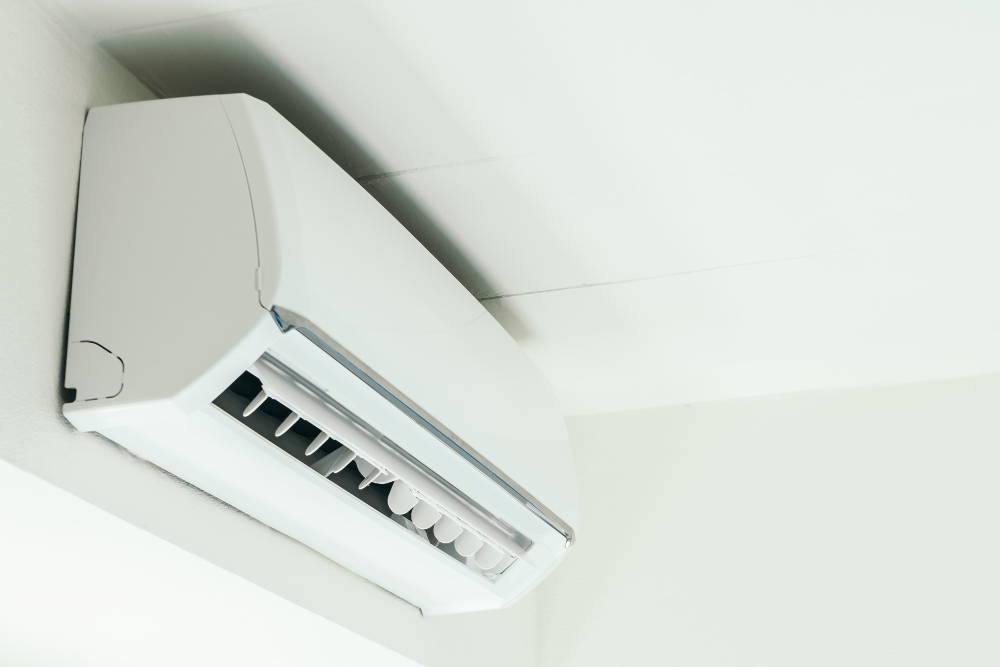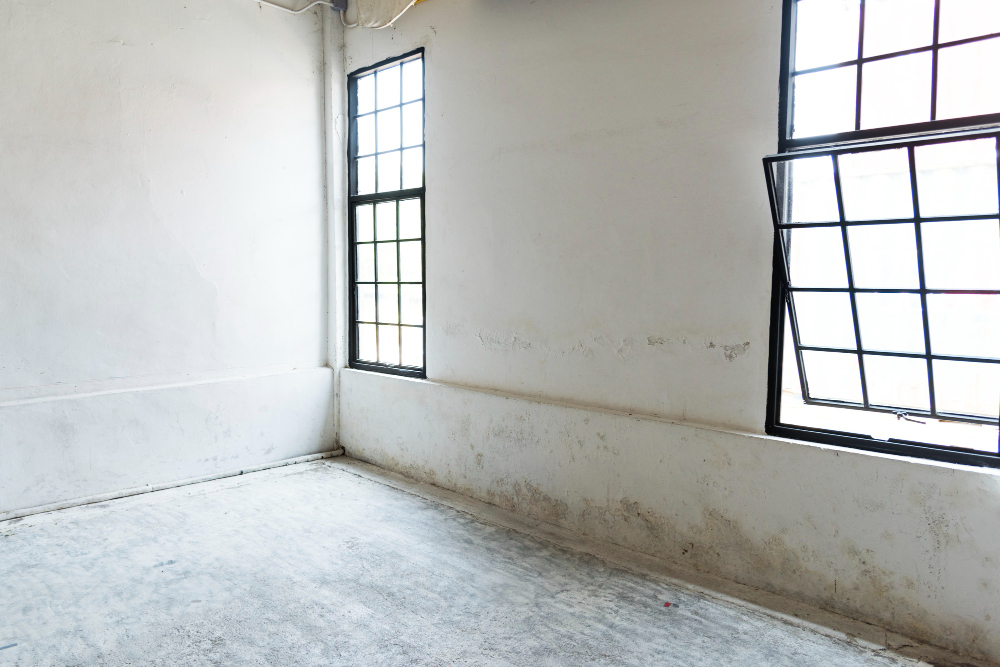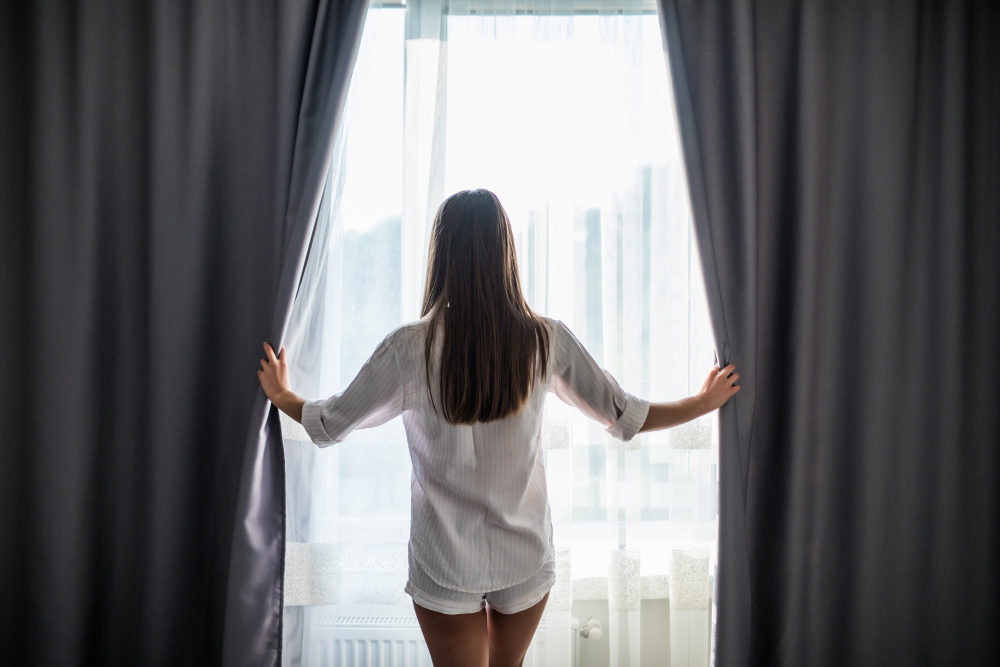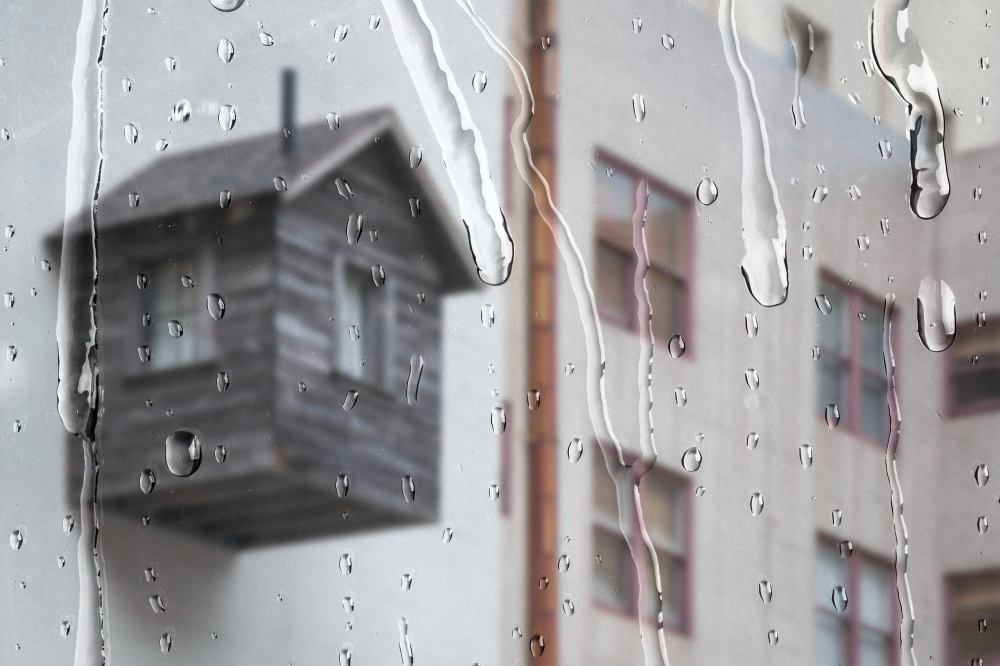Do you feel like the air is heavy or spot mold growing on your home’s interior? That’s a sign of high humidity, which can lead to health problems. Since the threat is real, you need to understand how to reduce humidity in the house for comfort and peace of mind.
Key takeaways
- Keep indoor humidity between 40% and 50% to prevent mold growth and ensure comfort.
- Ventilation, dehumidifiers, and proper drainage are simple ways to control excess moisture.
- Reducing humidity improves air quality, safeguards your property, and creates a healthier living environment.
15 Ways of How to Reduce Humidity in a House
A study entitled “Indirect health effects of relative humidity in indoor environments“, published in the PMC, shows the ideal indoor humidity is 40%–60%, though levels below 50% discourage mold growth. Adjust for comfort and consider outdoor conditions. Check out the 15 best ways to lower humidity in house to help keep your home comfortable.
1. Run the Air Conditioner

As temperatures rise, people often close their windows and turn on the air conditioner to cool their homes. However, they may not realize that the system is also lowering indoor humidity.
It means that if high humidity is a concern, letting the air conditioner run for an extended period can help pull excess moisture from the air and create a more comfortable living space.
Also Read: How to Clean a House Professionally: A Complete Guide
2. Fix Leaks and Seepage
High humidity can also be triggered by water entering a house, which may be caused by poor drainage, missing gutters, or ground that slopes toward the foundation.
Solutions range from simple landscaping to excavation and waterproofing. Indoor leaks around pipes, tubs, or sinks can also create damp areas that promote biological growth.
3. Invest in a Dehumidifier
Investing in a dehumidifier is one of the easy ways to reduce humidity in a house. Dehumidifiers remove moisture from the air, lowering indoor humidity and helping prevent mold growth. In houses, placing a unit in the basement and running it consistently can help maintain healthy humidity levels.
4. Control the Sources of Moisture
Vent all gas burners and clothes dryers outdoors to prevent hot, humid air from increasing moisture inside the house. Use kitchen and bathroom exhaust fans as well to reduce condensation.
5. Humidity Measurement and Monitoring System
Measuring humidity prevents wasted effort and costly repairs. Use a digital hygrometer in basements, bathrooms, and kitchens, placed four feet high and away from vents. Test accuracy with the salt method; adjust readings to track mold-risk conditions reliably.
6. Pay Attention to Concrete Floors

One of the easiest ways of how to reduce humidity in your house is to pay attention to the floor. Carpet can trap moisture and promote biological growth, so you can use washable area rugs instead. In damp climates, if installing carpet over concrete, place a vapor barrier with sub-flooring above it to reduce moisture problems.
7. Set Up Charcoal Briquettes
Place charcoal briquettes in a basket, can, or container to absorb excess humidity. Set them in damp areas of the home, especially smaller spaces, where they gradually draw moisture from the air to reduce humidity levels.
8. Use Exhaust Fans in the Bathroom and Kitchen
Use exhaust fans in bathrooms and kitchens to remove excess moisture and help control indoor humidity. Run them during showers and for 5–10 minutes afterwards to remove excess humidity and help maintain normal indoor levels.
9. Keep Pot Covered when Cooking
Many range hoods capture steam poorly, letting moisture escape into the air. Test yours while boiling water to see the spillover. To reduce indoor humidity, keep pots and pans covered whenever possible during cooking.
10. Seal Cracks and Gaps
Cracks in walls, roofs, windows, doors, or foundations let humid air and moisture enter the home. Seal visible gaps with caulking, but for hidden problems, it’s best to call a professional for inspection and repair.
11. Bring in the Outside Air

Opening windows and doors can reduce humidity in your house by improving ventilation. Creating a cross-breeze by opening opposite sides of the facility is effective. A few hours of proper airflow daily can greatly improve warehouse humidity control.
Also Read: 15 Morning Routine Ideas to Boost Productivity All Day
12. Install a Clothesline
Even properly vented dryers add indoor humidity. In warmer months, use an outdoor clothesline to release moisture outside. If space is limited, set up a drying rack outdoors instead, helping prevent excess humidity and reducing mold risks inside your home.
13. Keep Your Gutters Clean
Clogged or misdirected gutters often cause indoor leaks, raising humidity and damaging your home. Keep gutters clean, and make sure downspouts direct water at least six feet away from the foundation to prevent moisture problems.
14. Move Your House Plant
Indoor plants add beauty but also release moisture, which can raise humidity levels. If you have many, consider moving them to a single well-ventilated room or relocating them outdoors to help reduce excess indoor humidity.
15. Take Shorter Showers and Baths
Bathrooms are a major source of indoor humidity, as showering and bathing release water vapour into the air. The longer hot water runs or sits in the tub, the more moisture builds up, raising overall indoor humidity levels.
Also Read: Improve Your Lifestyle with 6 Best Habit Tracker App Choices
Implement Meticulous Know-How to Reduce Humidity in a House
Managing moisture indoors does not have to be complicated, but it does require consistent attention. Simple strategies such as using ventilation, running dehumidifiers, improving drainage, and practicing mindful daily habits can reduce humidity in the house, creating a healthier and more comfortable living environment.




